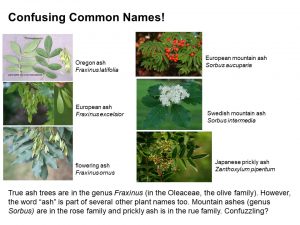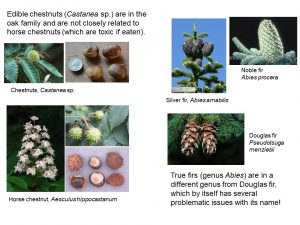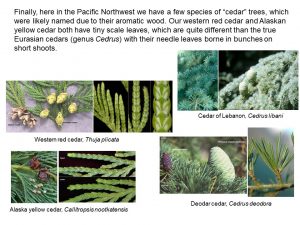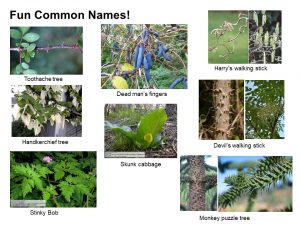Why can’t we just use common names for all plants? Wait a minute… We often do use common names for plants here at Hoyt Arboretum! If you are a hiker, gardener, or just a general lover of plants, using common names for most plants is totally fine and appropriate. Really, there is no plant shaming here!
In general, it is much easier to just say Douglas fir tree, dawn redwood or southern magnolia, rather than Pseudotsuga menziesii, Metasequoia glyptostroboides, or Magnolia grandiflora. However, the exclusive use of common names can be confusing and problematic for botanists, restoration ecologists, weed managers, foresters, nursery managers, and others who routinely work with many different plant species, or travel to or work with plants from different regions.
What is a plant common name (versus a scientific name, which will be discussed in a later blog post), and why can its use be problematic for people that work with a variety of plants, not only the really geeky ones?
What is a Common Name?
A common name is pretty much any name that is given to a plant colloquially, passed down by indigenous peoples, folklore, culturally through medicinal use, created and used by gardeners, etc. Common names can sometimes give clues as to what a plant is (i.e., a maple, ash, or fir tree) and its specific type (e.g., red maple, paperbark maple, hedge maple, green ash, Oregon ash, subalpine fir, noble fir, grand fir, etc.). In some cases a common name can describe the general “look” of a plant or may say something about its potential medicinal use without much other information about the plant. Examples of this may include: foamflower, oceanspray, snowberry, golden chain tree, selfheal, and boneset.
Occasionally, a common name can be misleading or confusing, such as our native understory herb wild ginger (not related to culinary ginger at all!), false lily-of-the-valley (which is called “false” because the first-named lily-of-the-valley is an Eurasian species), or poison oak (not an oak, but its leaves might resemble an oak leaf). Even with the above-mentioned potential sources of confusion, common names still work great if you live, hike, or work only in a particular region, so their use is really okay. No, really!
However, if you do work with many different plant species or travel, some of the main problems with the widespread use of common names for plants are that they:
- Can change by region.
- Can be inexact, as two or more plants (in the same genus or even between different genera) can be given the same common name.
- Alternatively, several common names can be given to the same plant species.
- Often indicate nothing about that species’ relationships with other closely related plants.
- There is no absolute authority, reference, or committee that oversees plant common names.
- And, there are many more plants that exist than we have common names!
Consider these two last points. Birders/ornithologists frequently use common names for birds; there is an official maintained list of common names for birds in North America. However, there are about 1,100 bird species in North America, with only about 700 in western North America. In contrast, the U.S. has approximately 18,000 plant species, with our latest 2018 edition of the Flora of the Pacific Northwest listing about 4,800 species. To have common names for all of these plant species boggles the mind!
As far as common names being inexact for a species or between genera, there are many examples of how the use of common names may lead to confusion about the identity of a given plant. At Hoyt Arboretum, we have experienced confusion from visitors in the following examples:






To summarize, the use of common names to identify and name plants, especially if you are gardening, hiking, or just talking about plants of a certain region, is totally appropriate, fine, and awesome. Anything that works to encourage the enjoyment of plants and nature is wonderful! However, if you work with or enjoy multiple plant species, especially closely related ones, or work or talk about plants from different areas in the country, it is often easier and more exact to use scientific names.
Fun Common Names at Hoyt Arboretum!
Just for fun, here are a few common names that can be seen at Hoyt Arboretum. Can you speculate on why these plants may have been given these names?


About the Author


Images from:
Hoyt Arboretum
Oregon Flora Project Photo Gallery
OSU Landscape Plants photos
